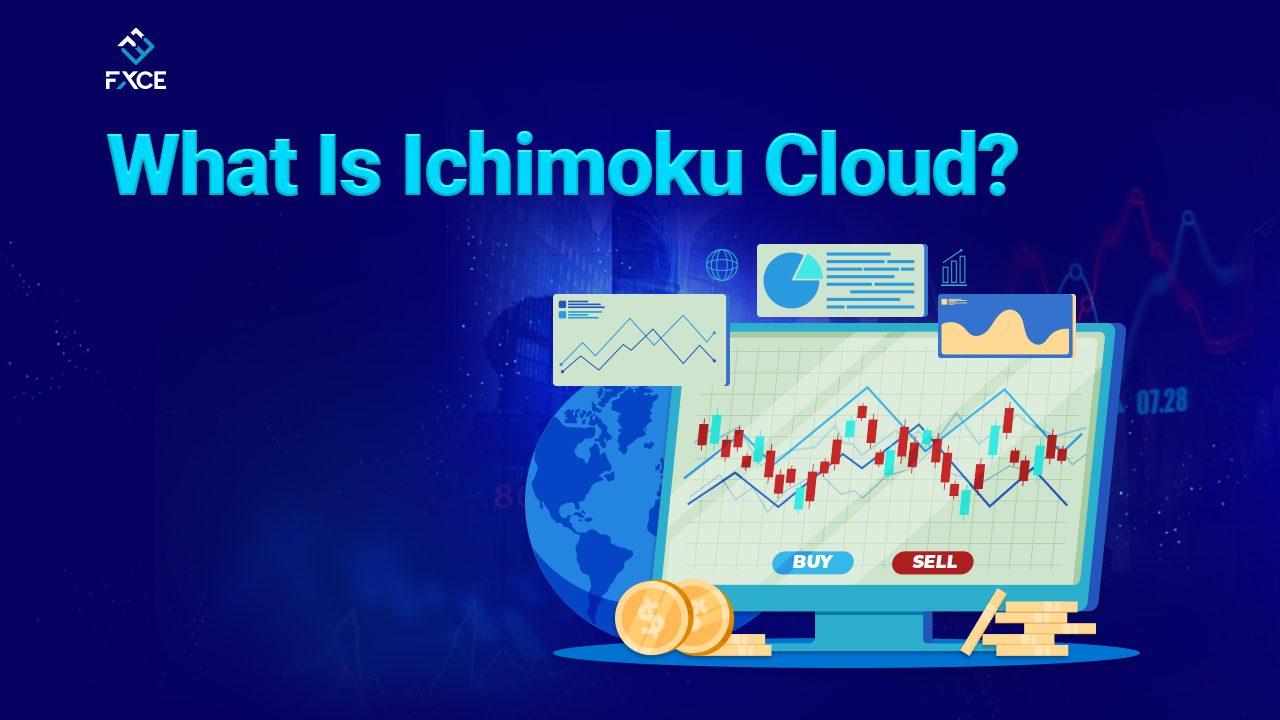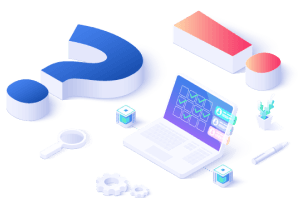


Ichimoku Cloud is one of the powerful trading tools for many different types of markets. It is known as an indicator capable of working as an automated and almost complete trading system which saves time and is used by many traders. In this article, FXCE will give more enjoyable information about the history and basic concepts of the Ichimoku indicator.
>> See more interesting articles at:
What is timeframe? How to choose a timeframe that works for your trading strategy
Minimize Trading Losses With These Forex Tools
Powerful Guide For Risk Management With EA
What is Ichimoku Cloud?
The Ichimoku Cloud, also known as Ichimoku Kinko Hyo (one look equilibrium chart). Usually, this indicator consists of 5 components and 2 of those 5 components form a cloud-like component so it is called Ichimoku Cloud.
In technical analysis, this indicator works best as a trend indicator because most of the components of this one are calculated by average formulas. Besides identifying trend direction, this indicator also does a good job of showing support, resistance, gauge momentum, trading signals.
That's why we can see Ichimoku as a complete system and do not need to use any other tools. Trading system Ichimoku Charts are applicable to all financial instruments and trading timeframes. As a result, traders understand the financial markets and find opportunities with a high probability of winning. In just a few seconds, a trader can determine if the current trend is positive or consider a better market setup.
History of Ichimoku indicator
Goichi Hosoda - the father of the Ichimoku Cloud indicator
The father of Ichimoku is a Japanese journalist named Goichi Hosoda, he has a great passion for the field of economics. That's why he spends most of his time observing, recording, and statistical rice prices every day. From there, he derived the law of price movement and reaction in certain areas.
With a passion for Japanese candlesticks, Goichi Hosoda is determined to research and develop an indicator that can be used in its entirety. After establishing the chart research center, he and his colleagues worked together from the end of 1930, until 4 years later in 1935 this trading system was completed. After a long time, in 1969 the indicator Ichimoku was published.
After that, this type of indicator was often used in Japanese stock exchanges. Currently, this is also the system chosen by many securities and cryptocurrency investors because of the efficiency it brings.
Components of the Ichimoku indicator
Cloud indicator Ichimoku is made up of 5 different lines on a chart. These lines help traders locate support and resistance zones. They help traders identify whether the market is trending or in an accumulation position and here are the 5 components that make up the indicator Ichimoku.
5 main components in the Ichimoku indicator
-
Kijun-Sen - Base line
Also known as the trend line. Each Kijun-Sen value is calculated as the average of the last 26 trading sessions, including the current session. This line is the midpoint of the 26-day high-low range.
The Kijun-Sen line shows price momentum over a long period, so the provided signal has relatively high reliability.
Kijun-Sen = (high + low) / 2, default period = 26
-
If the price line is above Kijun-sen: it indicates the recent price momentum is to the upside.
-
If the price is belowKijun-Sen: recent price momentum is to the downside
-
Tenkan-Sen - Conversion Line
Is the average price of the highest and lowest prices in the last 9 trading sessions, used as a signal line? Because it is used for a shorter period, Tenkan-Sen reacts faster and follows the price line more closely than Kijun-Sen. In the trading system Ichimoku, Tenkan-sen acts as a short-term MA.
Tenkan-Sen = (high + low) / 2, default period = 9
Unlike Kijun Sen, the Tenkan-sen line is only calculated based on the average price of the last 9 trading sessions. The intersection of these two lines helps investors identify the market. Based on that, you can plan to find an entry point.
-
Price is above Tenkan-Sen: the market is in an uptrend
-
Price is below Tenkan-Sen: the market is in a downtrend
The Tenkan-Sen is the fastest moving line that appears in the Ichimoku Cloud indicator. When Tenkan-Sen and Kijun-Sen are decidedly above the cloud, the issue’s trend is positive. And when they are below the cloud, the issue’s trend is negative.
-
Chikou-Span - Lagging Span
This can be understood simply as the closing price redrawn in the previous 26 trading sessions. Chikou-Span is calculated as the closing price of the current session back to the previous 26 sessions. Lagging lines help traders identify the ongoing direction and key support/resistance levels.
Chikou-Span = Price Close shifted back 26 bars
Identify trends with the Chikou-Span . line
-
Chikou-Span is above the price line: uptrend. The further away the Chikou-Span is from the price line, the stronger the upward force of the trend.
-
Chikou-Span is below the price line: downtrend. Similarly, the further away the Chikou-Span is from the price line, the stronger the downward force of the trend
-
Chikou-Span moves along the price line, close to the price line: sideway trend
Senkou-Span A and Senkou-Span B form the Ichimoku Cloud boundary
-
Senkou A (Leading Span A)
The values of Senkou-span A are the simple average of Kijun-Sen and Tenkan-Sen, but on the graph, these values are plotted 26 sessions forward (in the future). The purpose of using the Senkou-Span A path is to determine the intersection with the Senkou-Span B line and thereby determine the color and shape of the Ichimoku Cloud.
Senkou-Span A = (Kijun-Sen + Tenkan-Sen) / 2 (Senkou A is shifted forward 26 bars)
-
Senkou B (Leading Span B)
The values of Path B are calculated similarly to Kijun-Sen and Tenkan-Sen but with a longer period, 52, and the Senkou-Span B line is also shifted forward 26 sessions like Senkou-Span A. Senkou-Span A and Senkou-Span B are the two most important lines for creating boundaries Ichimoku Cloud.
Senkou-Span B = (High + Low) / 2, using period = 52 (Senkou B is shifted forward 26 bars)
-
Senkou B forms a cloud with Senkou A which shows potential areas of support or resistance.
-
The limitation of Senkou B is slow to react to price changes, since it can take a long time for the price to generate a new high or low over 52 periods.
Advantages of using Ichimoku
Ichimoku Cloud
-
This indicator can be used in many different trading markets such as stocks, futures, forex, indices, and precious metals...
-
Ichimoku Cloud It also allows traders to come up with ideas and set up trades in a very short time, within minutes. As a result, traders can easily recognize the direction of price movement, momentum, and strength of the trend.
-
This is a method of combining 3 indicators on one chart and displaying a lot of data so that traders better understand the price action and make more informed trading decisions.
-
Chart Ichimoku is biased toward identifying trends, this means Ichimoku Indicators work best in markets that need this.
Some disadvantages of Ichimoku Cloud
Ichimoku Chart is often complicated in terms of data
-
The biggest downside to the Ichimoku Cloud is its information complexity, which often takes a long time for beginners to learn and use effectively.
-
Sometimes data granularity and multiple chart lines are not always beneficial, sometimes they can disrupt trader ability to evaluate trades.
-
Although a lot of data is used for the calculation, it is sometimes not completely accurate because of fluctuations in the market.
Summary
This is a convenient indicator that integrates both the function of the MA and the average price of different trading sessions. From there, it helps traders to have an overview and make timely decisions. Ichimoku Cloud includes 5 important components that traders need to distinguish clearly. Stay tuned for more articles to learn more about how to trade effectively with the Ichimoku Cloud.
>> Follow other FXCE channels for more interesting information for Trader:



